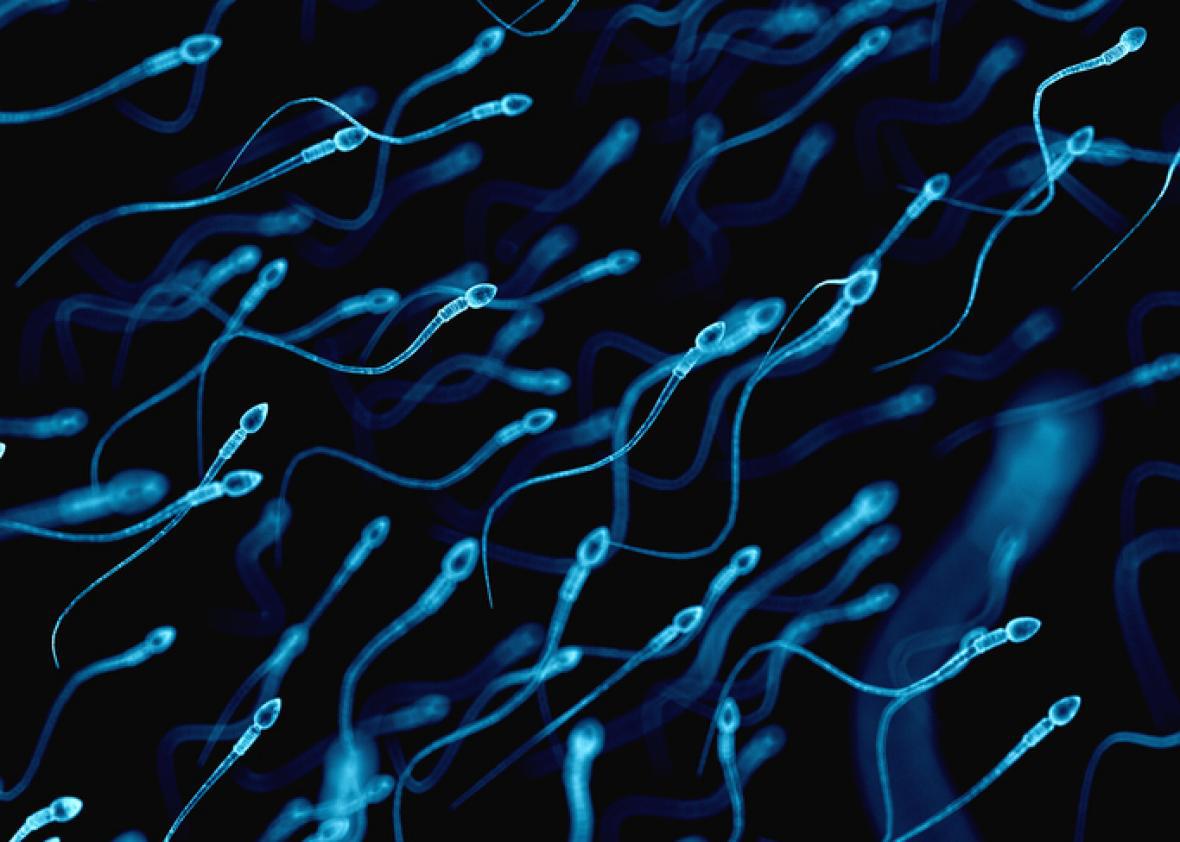Men in Western nations produce about half as many sperm per milliliter of ejaculate as their peers did in the ‘70s, according to a new research review published in Human Reproductive Update. Between 1973 and 2011, researchers found, the sperm concentration of Western ejaculate fell more than 52 percent, while the total number of sperm per semen sample fell by almost 60 percent.
“If we will not change the ways that we are living and the environment and the chemicals that we are exposed to, I am very worried about what will happen in the future,” co-author and epidemiologist Hagai Levine told the BBC. Those chemicals include phthalates, which recently had their 15 minutes of fame for being present in nearly all tested brands of macaroni and cheese mixes. Phthalates get into foods by way of plastics in packaging and processing equipment, and evidence strongly suggests that they disrupt testosterone production, leading to reduced sperm counts.
Previous studies of sperm count in men over time have been called into question over concerns such as known fertility problems among participants and changing sperm-measurement techniques, which may have overestimated sperm count in earlier studies. For this new study, researchers analyzed data from 185 studies that used the same sperm-count testing procedure on nearly 43,000 men, none of whom were selected for existing infertility issues or other conditions. After correcting for age and length of time since last ejaculation, the authors noted a decline in sperm concentration among Western men from 99 million sperm per milliliter in 1973 to 47.1 million sperm per milliliter in 2011. Researchers found a limited number of studies of non-Western men, but those that did exist did not indicate a similar decline sperm concentration.
The good news is that 47.1 million sperm per milliliter is still pretty healthy. A person’s sperm count is considered “low” when he has fewer than 15 million sperm per milliliter of semen, and plenty of men with low sperm counts are still able to conceive children. Future studies should examine whether there has been a corresponding increase in men clocking in below the 15 million sperm threshold in addition to a general decrease in average sperm concentration. More good news: There are research-based behavioral changes men can make to combat sperm-count decline, such as quitting smoking, eating healthy meals, and avoiding food and drink that have touched pesticides or materials containing BPA.
The bad news, according to Levine, is that the new study’s results may foretell “the extinction of the human species” if we don’t figure out what’s causing the lack of sperm and take action. Well then! I guess it’s less gruesome to imagine the human species dying out gradually because of a lack of sperm, since for the past several years we’ve been imagining the extinction of humanity via, to name a few, climate change, antibiotic resistance, and Ebola.
